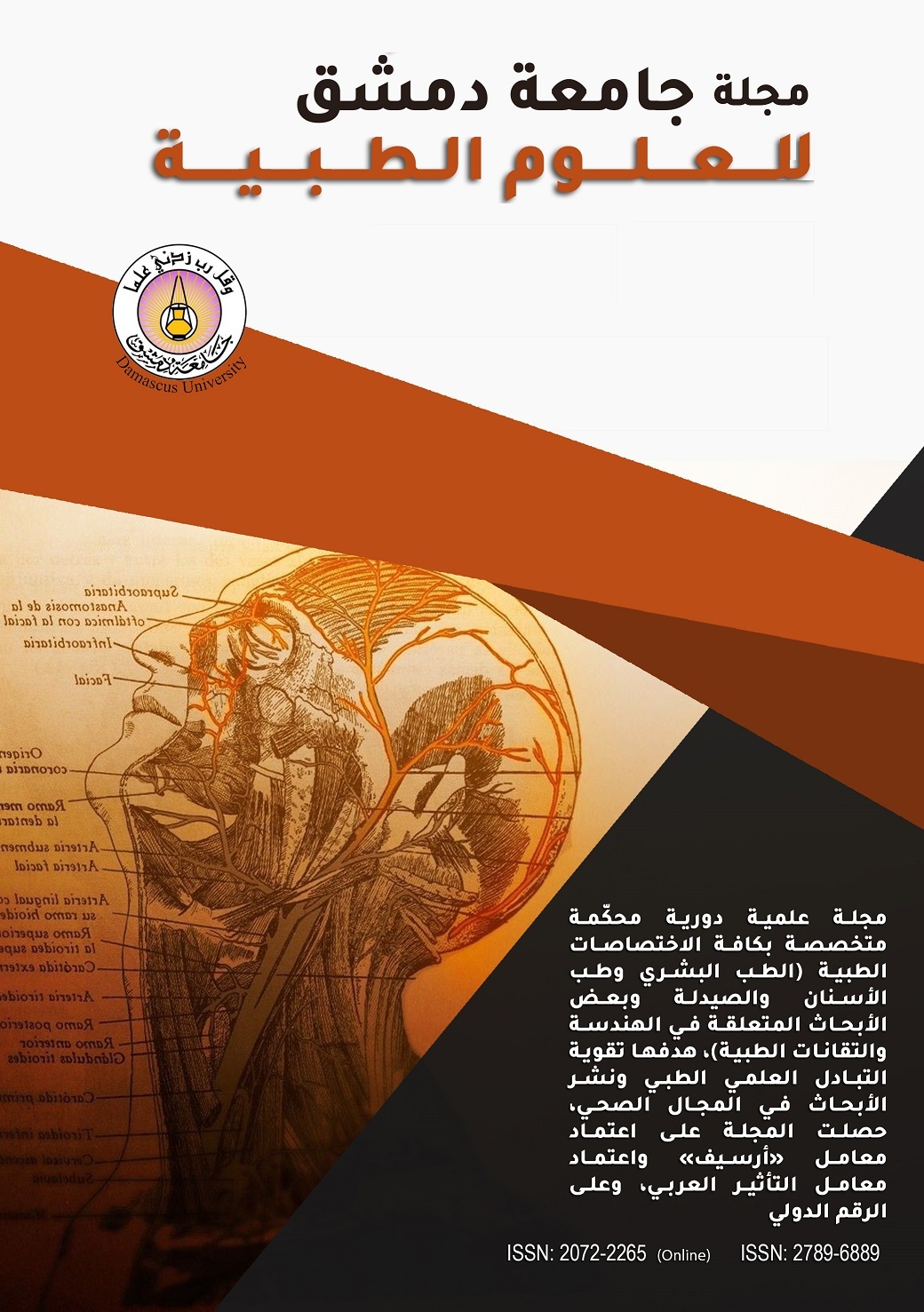Interceptive orthodontic treatment need among a sample of Syrian early mixed dentition children
Keywords:
Mixed dentition, malocclusion, interceptive orthodontic treatmentAbstract
Aims of study: To determine the prevalence and type of malocclusion in the mixed dentition in a sample of Syrian orthodontic patients who sought orthodontic treatment, and the orthodontic appliances used to treat them.
Materials and Methods: The orthodontic records of 567 patients aged 7 to 10, who sought orthodontic treatment in the Department of Orthodontics, Dental faculty/Damascus University, during the last three years (2017-2019), were investigated to establish data related to their type of malocclusion, detrimental habits, dental abnormalities, crowding, cross bite and the type of orthodontic appliances used in their treatment.
Results: The prevalence of malocclusion was 39.5% of the studied sample. Skeletally, the most common malocclusion was class II (54.1%), thumbsucking was the least common prevalent habit among the investigated sample. Removable appliances were the most common type of orthodontic appliances used in treating the sample of this study (77.9%).
Conclusions: The prevalence of malocclusion during mixed dentition showed in this study was within the range published in the literature. Urgent intervention is required to minimize the severity of malocclusion.

